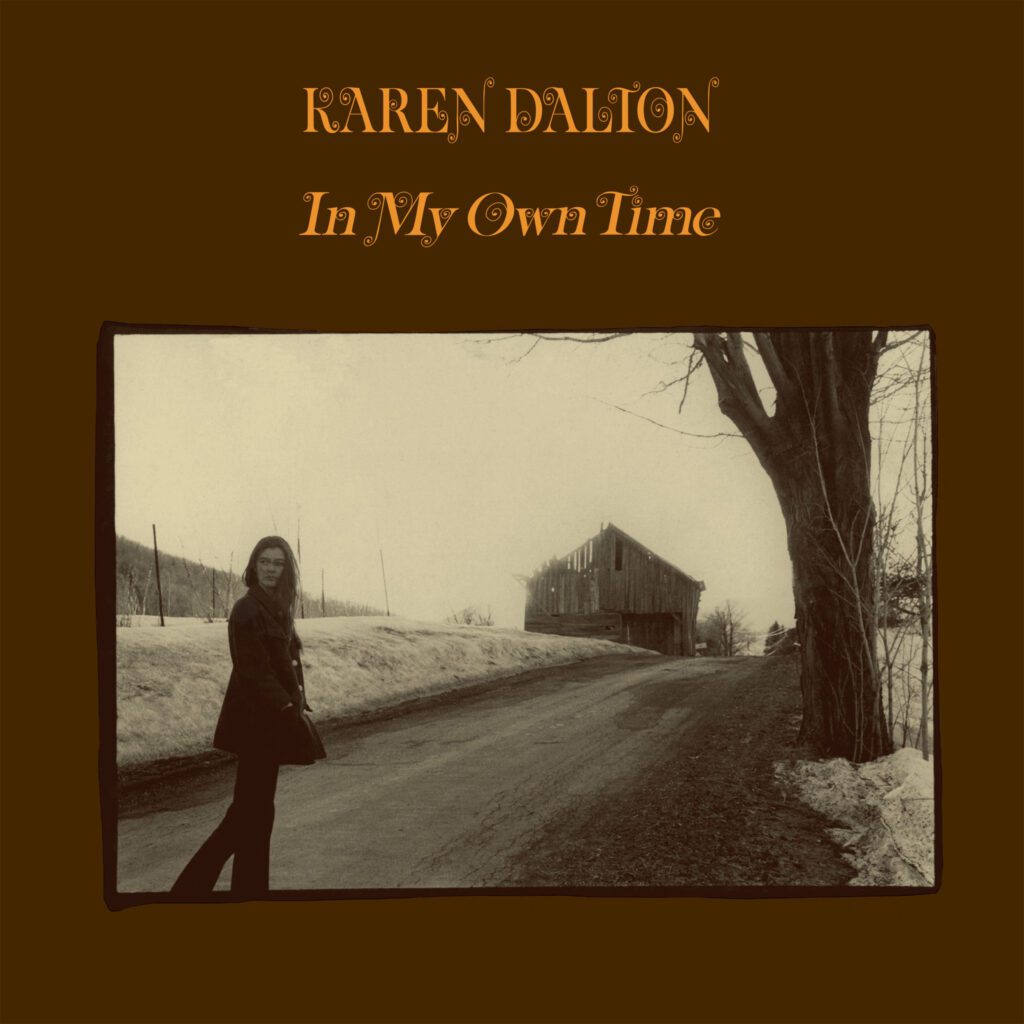Remembering Karen Dalton, born on this day in 1937. —Ed.
Anytime is a good time to be a fan of the late Karen Dalton, but was especially so in the spring of 2022, as Light in the Attic assembled an expanded 50th anniversary edition of her classic second album, 1971’s In My Own Time, in Standard Deluxe and Super Deluxe editions. Adding six live tracks and three alternate takes to the original release’s ten selections, the additions deepen the portraiture of this frequently overlooked interpreter of song.


Compared by Bob to Billie Holiday, Dalton preferred to cite Bessie Smith as a more formative influence. In truth, the two observations are complementary. To elaborate, Fred Neil is reported to have said of Dalton: “She sure can sing the shit out of the blues.” That hits the Bessie side of the pairing smack in the bullseye. But Dalton also possess a level of sophistication in her delivery that is in the tradition of Billie.
It’s also hard to deny that there’s a similarity in sound between Holiday and Dalton, though nobody’d ever mistake one for the other. Dalton can also be thought of as a stylistic predecessor to a handful of 21st century folkies; she’s particularly comparable to Josephine Foster, a singular contemporary artist who contributed the closing track to Remembering Mountains : Unheard Songs by Karen Dalton.
That LP, released in 2015 by Tompkins Square, featured 11 versions of Dalton’s songs by 11 different women, songs Dalton wrote but never recorded in her lifetime (she died of an AIDS-related illness in 1993). That the two records she cut in studios, her 1969 debut It’s So Hard to Tell Who’s Going to Love You the Best (released by Capitol) and In My Own Time (released by Just Sunshine / Paramount), lacked any original material is noteworthy, as the arrival of the second roughly coincided with the decline of the folk boom and the blossoming of the singer-songwriter phenomenon.
It’s doubtful this circumstance curtailed the commercial prospects of her two albums, though it might’ve contributed to the lack of further releases. But in reality, Dalton is known to have disdained recording studios, as archival recordings both live (Cotton Eyed Joe and the upcoming Record Store Day release Shuckin’ Sugar) and home rehearsal tapes (Green Rocky Road and 1966) now make up the largest portion of her discography.


But Dalton’s discomfort with the studio process isn’t a bit perceptible on In My Own Time, an absolute gem of an album that retains elements of her folk background, most vividly in versions of the traditional songs “Katie Cruel” and “ Same Old Man” (both of which include Dalton on banjo), as these tracks productively contrast with the sophistication mentioned above, an aspect that’s immediately established in the album’s opener “Something on Your Mind,” a Dino Valenti tune.
There’s a broad range of material throughout the record, including transformative dives into the soul zone with takes of Percy Sledge’s “When a Man Loves a Woman” and Marvin Gaye’s “How Sweet It Is (To Be Loved by You)” (the latter wiping the floor with James Taylor’s version), plus a swing to the C&W side of the street in a centerpiece reading of “Take Me,” by George Jones and Tammy Wynette.
There are also three stellar cuts that reinforce Dalton’s aptitude in fronting a full band of studio aces as they flourish in a blues and C&W-tinged rock mode: Paul Butterfield’s “In My Own Dream,” Richard Manuel’s “In a Station,” and Joe Tate’s “One Night of Love.” And this last track in particular thrives on the subtle idiosyncrasies that might’ve once hindered Dalton’s retail possibilities but today lends her work an enduring freshness.
Other than a sweet version of Fred Neil’s “Blues on the Ceiling” (which figures on her debut), the bonus material is either different takes or live versions of tracks from the album. However, these extras do establish that Dalton remained a capable live performer, with two cuts from the Beat Club in Germany and four from the Montreux Golden Rose Pop Festival in Switzerland in the year of In My Own Time’s release. For those who already own a copy of that album, this set might not be an essential upgrade, but it’ll surely unwind satisfactorily. For folks without a copy, this is a splendid way to remedy that lack.
GRADED ON A CURVE:
A
